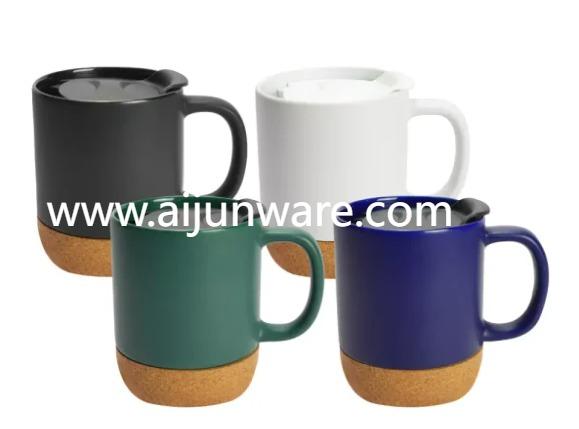-
Noticias Feed
- EXPLORE
-
Páginas
-
Grupos
-
Blogs
Can Aijun Cork Bottom Mug Alternatives Save Wood Tables From Heat Marks

In kitchen nooks and craft corners a Cork Bottom Mug can be more than a store purchase it can be a weekend upcycle project that adds personality and function to your morning routine. Turning wine corks into a custom mug base recycles materials and gives your cup a warm non slip foot that protects surfaces while adding a handmade touch. As more people embrace small scale DIY and sustainable swaps, this simple craft pairs practical protection with a visible eco conscious gesture that photographs nicely for social shares.
Start with what makes cork a sensible choice. Cork compresses gently so it cushions contact points on wood or polished tables and it grips smoother surfaces better than plain ceramic or metal. That natural texture and insulating quality explain why many commercial designs add a cork sole to travel mugs and cups; it reduces heat transfer to surfaces and helps prevent rings and minor scratches. Reusing wine corks gives the same surface friendly effect while keeping small bits of waste out of the bin.
Gather tools and plan your layout. You will need a clean mug with a flat base wine corks a strong but water resistant adhesive a craft knife and sandpaper. Arrange the corks around the mug base to check fit and pattern before gluing. For a neat result trim any uneven cork ends so the ring sits flush. A straight layout gives broad contact area while a stacked mosaic can add height and a rustic look good for wider mugs. Use a slow set adhesive rated for ceramic and cork and apply pressure until the bond sets.
Sealing and finishing matter for durability. A thin clear coating on the exposed cork can keep dust and minor stains from setting in while still keeping the tactile feel. If you plan to wash the mug frequently avoid soaking the cork and instead wipe the base clean with a damp cloth. Some makers prefer a removable cork ring attached with a pressure fit or a thin silicone sleeve so the cork can be replaced without sacrificing the mug. That approach blends the convenience of a permanent feature with the long term serviceability that active users value.
Design variations let you match mood and use. Use whole corks for a chunky base that reads as reclaimed while sliced cork disks create a streamlined flat pad. Alternating natural cork with a thin band of painted cork adds graphic contrast for a more modern look. For travel friendly mugs keep the cork footprint compact and low so it still fits into cup holders while adding grip for trays and tables.
Practical tips improve performance. Match cork thickness across the ring so the mug does not wobble. Allow adhesives and sealants to cure fully before first use and test the bond on a less precious surface to make sure it holds under weight and temperature changes. If you prefer a reversible approach add a slim detachable ring using food safe silicone adhesive so you can remove and deep clean both mug and cork when needed.
Beyond craft value this project taps into larger conversations about mindful consumption and creative reuse. Upcycling small household items like wine corks reduces single use waste and gives an object a new life with a story you can tell guests. When people share hands on projects online they often highlight how functional details like a cushioned base protect furniture and reduce accidental spills which makes the craft both decorative and useful. If you like the idea of a factory made mug that already includes a cork base as an alternative to DIY options check product notes on cork footprint adhesive method and care guidance so you pick a model that fits your lifestyle. For examples of crafted cork bottom styles and serviceable designs visit www.aijunware.com .
- Art
- Causes
- Crafts
- Dance
- Drinks
- Film
- Fitness
- Food
- Juegos
- Gardening
- Health
- Home
- Literature
- Music
- Networking
- Other
- Party
- Religion
- Shopping
- Sports
- Theater
- Wellness
